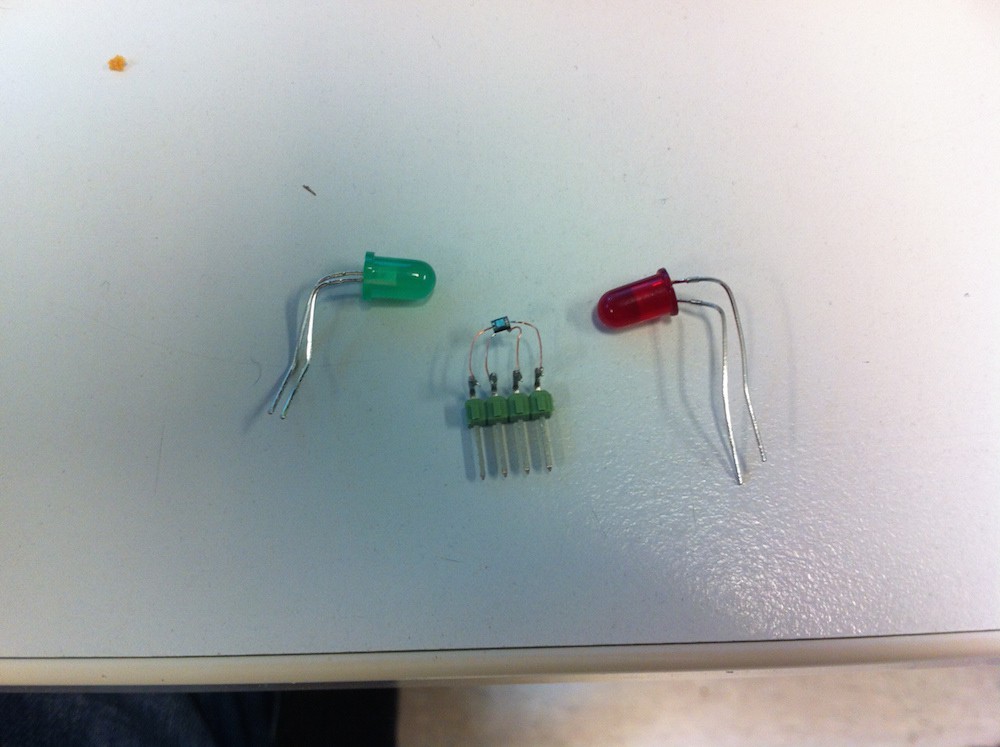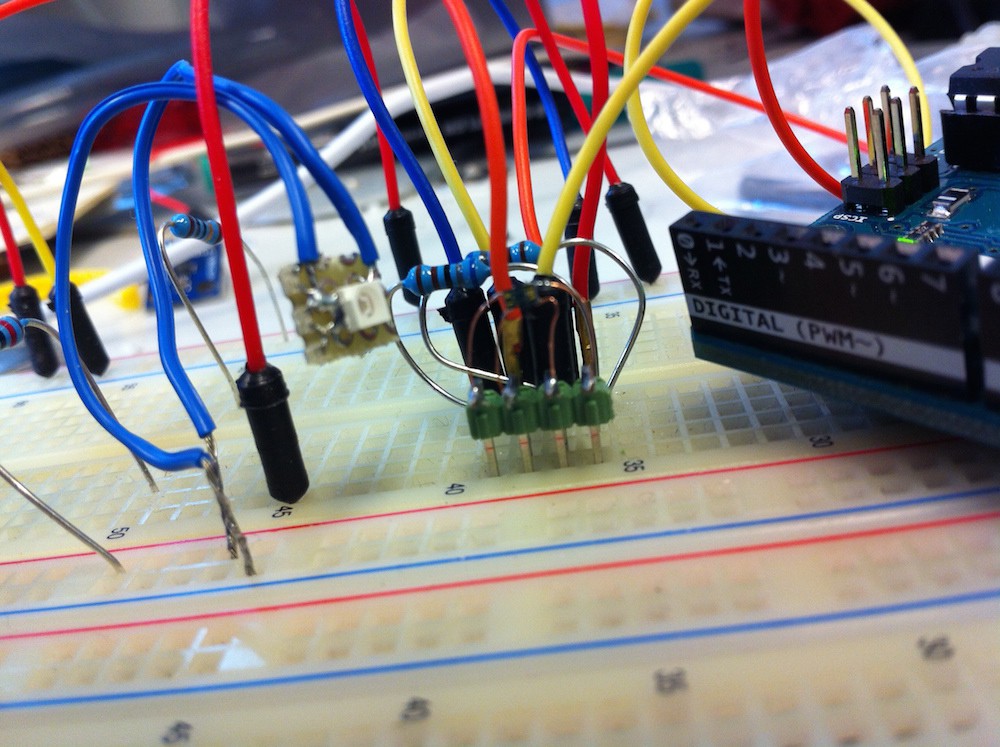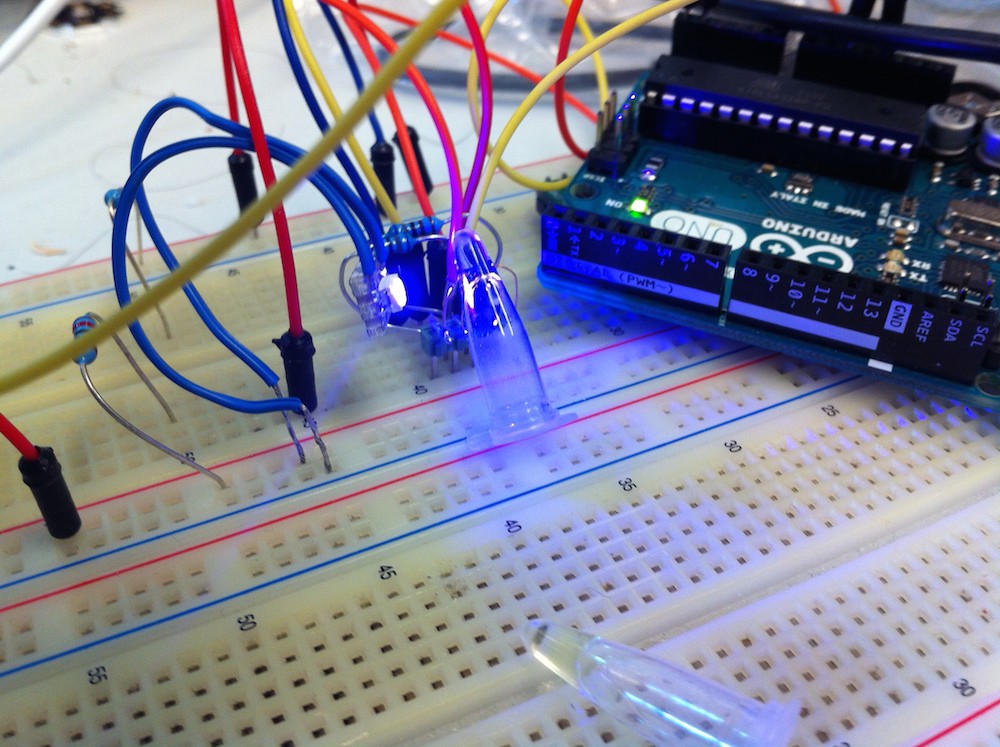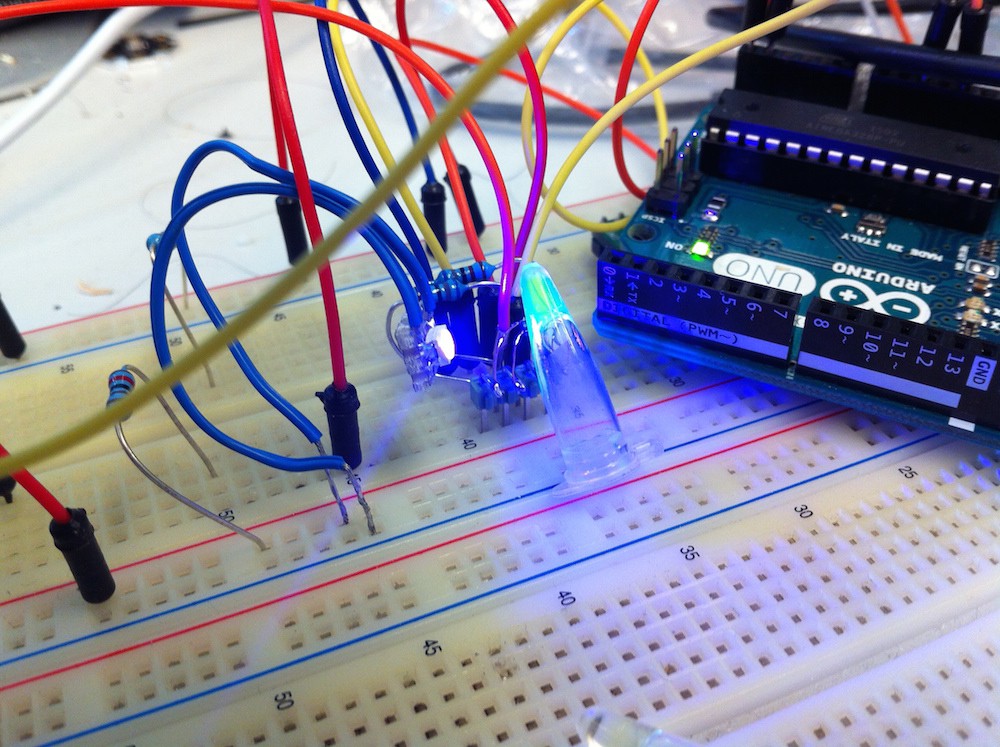I just got my sensor working! This is the key element of the LAMP diagnostic device, and something I don't think has ever been done before. Digital multi-channel fluorescence spectroscopy with a sub $2 chip, The other half of the device, the precision temperature regulation system, is something I already have working in my PCR Machine. So, the main components of the diagnostic device are past the proof-of-principal phase!
A big thanks goes to Christoph on the Hacker Channel, who helped get my I2C device working!
I'm using the VEML6040 RGBW color sensor, and a 405NM UV led to excite fluorescein, which had the same excitation and emission profile as Calcein, the dye I plan to use for the detector device.
The SMD part is a tiny 4-pin device, which I have soldered onto copper wire, and then onto header pins.
The illumination is set at a 90 degree offset to the sample.
I use the UV to excite sample of water and 50 micromolar Fluorescein.
| UV led H2O: | |
| red channel | 8291 |
| green channel | 11501 |
| blue channel | 46281 |
| white channel | 65535 |
| UV led 50um Fluorescein: | |
| red channel | 11543 |
| green channel | 17613 |
| blue channel | 44271 |
| white channel | 65535 |
Theres a good increase in the Green channel, over 50%. Whats great, is that by using a RGB led, we can do positive and negative controls!
| UV led 50um Fluorescein, lid open | |
| red channel | 43481 |
| green channel | 41390 |
| blue channel | 35962 |
| white channel |
65535 |
| UV led 50um Fluorescein, LED off | |
| red channel | 311 |
| green channel | 271 |
| blue channel | 111 |
| white channel |
1208 |
If the UV led breaks, the blue channel drop by 99%, and if the lid is opened, the red channel goes up 500%. What that means is we can detect if there is a problem with the UV led, or if someone opens the device while the reaction is going on, both of which are vital for a diagnostic device!
Thing are going really well! I think with this key step done, I'll have the device completed in time for the 2015 competition!
 David
David




Discussions
Become a Hackaday.io Member
Create an account to leave a comment. Already have an account? Log In.